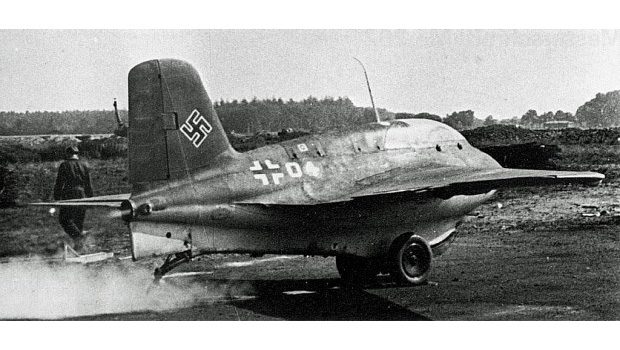History Guild General History Quiz 93
See how your history knowledge stacks up!
Want to know more about any of the questions? Once you’ve finished the quiz click here to learn more.
Have an idea for a question? Suggest it here and we’ll include it in a future quiz!
The stories behind the questions
1. In Medieval Europe what was referred to as ‘Outremer’?
The feudal polities created in the wake of the first Crusade – Outremer, literally meaning overseas in French, were four Roman Catholic realms in the Middle East that lasted from 1098 to 1291. They were the County of Edessa, the Principality of Antioch, the County of Tripoli, and the Kingdom of Jerusalem.
2. The US Secret Service was founded after which US President was assassinated?
William McKinley – He was shot at the Pan-American Exposition in Buffalo, New York, on September 6, 1901, six months into his second term. He was shaking hands with the public when anarchist Leon Czolgosz shot him twice in the abdomen.
Newspaper editorials across the country strongly criticized the lack of protection afforded to American presidents. By 1902, the Secret Service (a unit of the Treasury) was protecting President Theodore Roosevelt full-time. In 1906, Congress passed legislation officially designating the Secret Service as the agency in charge of presidential security.
3. What significant event occurred in the Katyn Forest?
The execution of Polish POW’s by the Soviets in 1940 – The Katyn massacre was a series of mass executions of nearly 22,000 Polish military officers and intelligentsia carried out by the Soviet Union in April and May 1940. The USSR claimed the Nazis had killed the victims, and it continued to deny responsibility for the massacres until 1990, when it officially acknowledged and condemned the killings. However, Russia refuses to classify this action as a war crime or as an act of mass murder.
4. What is the name of the organisation that went on to became the CIA?
OSS (Office of Strategic Services) – The Office of Strategic Services was the intelligence agency of the United States during World War II. The OSS was formed as an agency of the Joint Chiefs of Staff to coordinate espionage activities behind enemy lines. They worked with the British Special Operations Executive (SOE) and resistance groups in many occupied countries. In 1947 The CIA was formed out of many of the elements of the OSS.
5. Which colonial power used to rule Mozambique?
Portugal – The voyage of Vasco da Gama around the Cape of Good Hope in 1498 marked the Portuguese entry into trade, politics, and society of Mozambique . The Portuguese gained control of the Island of Mozambique and the port city of Sofala in the early 16th century, and by the 1530s, small groups of Portuguese traders and prospectors seeking gold penetrated the interior regions, where they set up garrisons and trading posts. Portuguese trading posts and forts displaced the previous Arabic commercial and military hegemony.
Portugal remained the colonial power until The Front for the Liberation of Mozambique (FRELIMO) initiated a guerrilla campaign against Portuguese rule in September 1964. After 10 years of war Mozambique gained independence in 1975.
6. Simón Bolívar was the first President of which country?
Greater Colombia – Also known as Gran Colombia, this was a state that encompassed much of northern South America from 1819 to 1831. It included present-day Colombia, Ecuador, Panama, and Venezuela, along with parts of northern Peru and northwestern Brazil. Gran Colombia was dissolved in 1831 due to the political differences that existed between supporters of federalism and centralism, as well as regional tensions among the peoples that made up the republic. It broke into the successor states of Colombia, Ecuador, and Venezuela; Panama was separated from Colombia in 1903.
Read more about Simón Bolívar and his fight for the independence of South American countries.
7. In what year did Hernán Cortés capture Tenochtitlán?
1521 – The siege of Tenochtitlan led directly to the downfall of the Aztec civilization and marked the end of the first phase of the Spanish conquest of the Americas. The Aztec population had been devastated by high mortality due to a smallpox epidemic, which killed much of its leadership.
8. What aircraft is this?

Messerschmitt Me 163 – a German interceptor aircraft designed for defence against bombers. It is the only operational rocket-powered fighter aircraft in history and the first piloted aircraft of any type to exceed 1,000 km/h in level flight. The aircraft proved lacklustre in its dedicated role as an interceptor, destroying between 16 Allied aircraft against 10 losses. Many pilots were killed during testing and training, at least in part because of the highly volatile and corrosive nature of the rocket propellant used in later models. It could reach 39,000′ in only 3 minutes, the engine was then shut down and the fighter would glide down onto the bomber stream to attack at speeds of over 880km/h, far faster than any Allied aircraft.
9. Paul Gauguin and Vincent van Gogh were part of which art movement?
Post-Impressionism – Post-Impressionism was a predominantly French art movement that developed between 1886 and 1905. Post-Impressionism emerged as a reaction against Impressionists’ concern for the naturalistic depiction of light and colour. Other artists in the movement include Paul Cézanne and Georges Seurat.
10. Who wrote Principia Mathematica in 1687?
Isaac Newton – Principia Mathematica is a work expounding Newton’s laws of motion and his law of universal gravitation, written in Latin, first published in 1687. The Principia is considered one of the most important works in the history of science.





